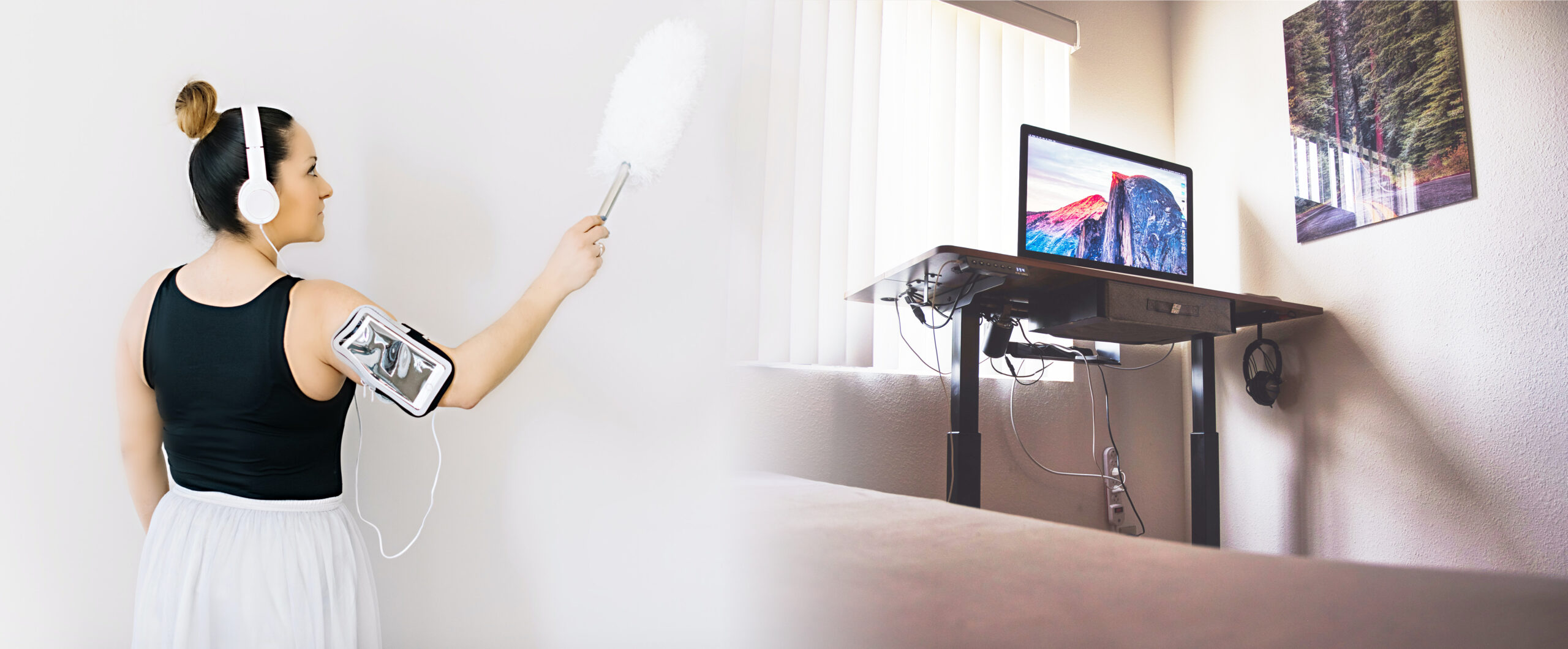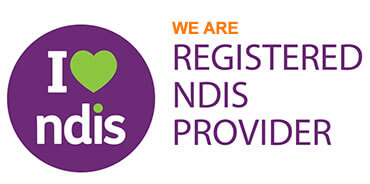How To Clean Vertical Blinds
This article will explore the various types of blinds and how to clean blinds correctly. We will also explore how to use natural methods to clean blinds. Finally, we will provide a few tips for maintaining blinds so that they last longer.
Table of Contents
What Are The Different Types Of Blinds?
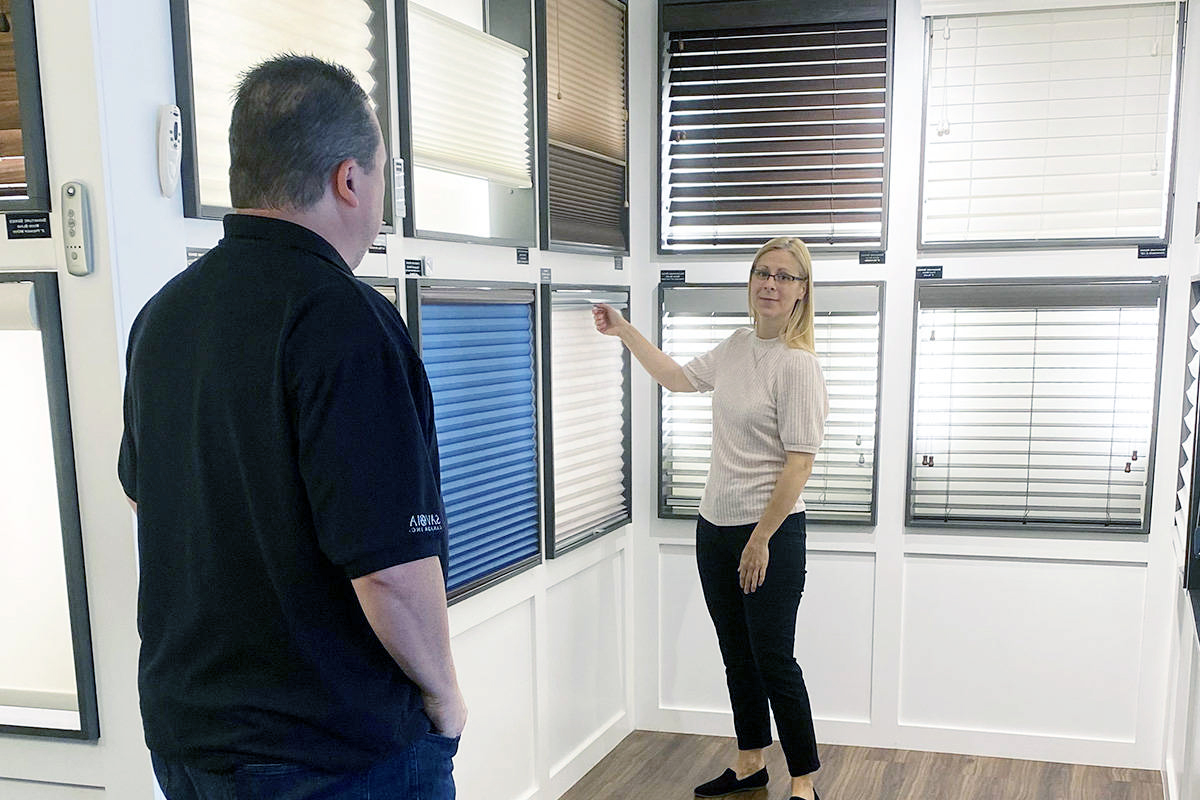
Blinds are window covers. They are a beneficial energy-saving window treatment that can be used in any room of your home. There are many different kinds of blinds on the market, from the popular vertical slat to the more elaborate pleated shades. These include:
Vertical Blinds
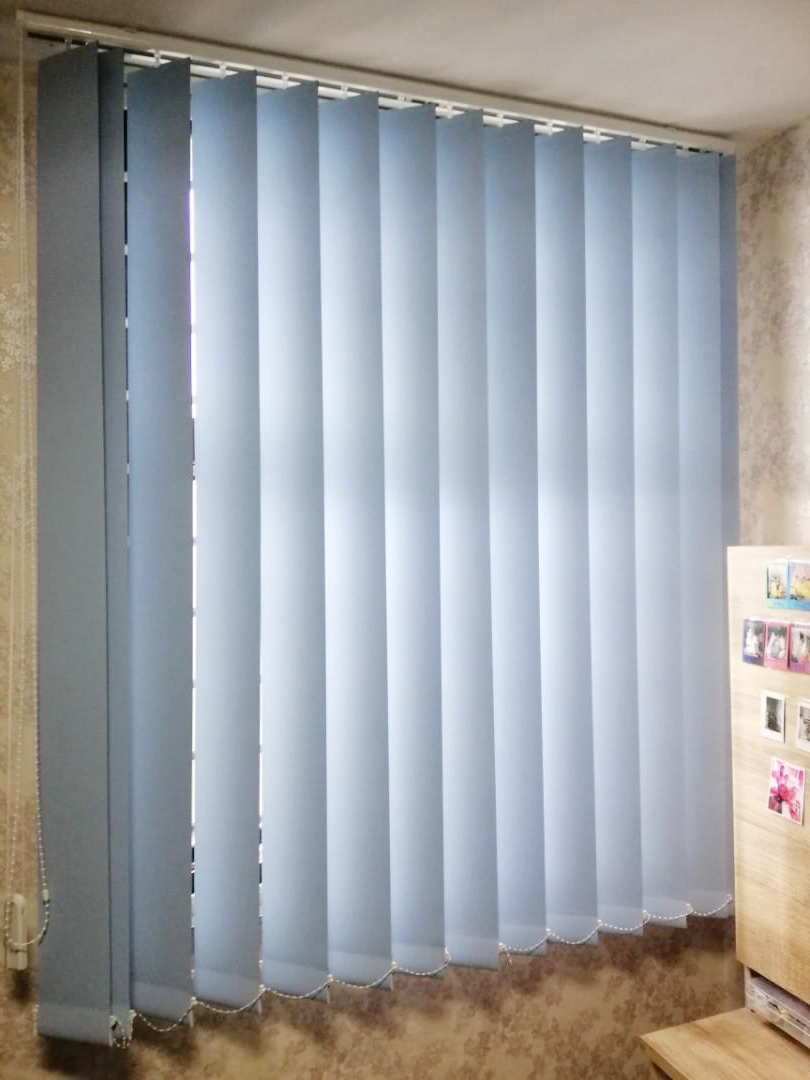
Vertical blinds are a common type of window covering consisting of slats that either roll up or slide up and down to cover an opening. Vertical blinds are often made from wood, vinyl, or aluminum material, and there are over 3000 different designs available.
Verticals can come in many sizes, including mini-blinds which offer light control and privacy without obstructing too much space at the window opening. Curtains have a similar appearance to vertical blinds but have less variety in design options. Curtains hang from the top of a window and can be pulled across to cover it entirely or drawn back to reveal more or less of the view.
When looking for an alternative to the traditional curtain, fabric vertical blinds are an excellent alternative. They are particularly suitable if you want to control light and heat and save a little money on bills associated with heating and cooling the house.
Roller Blinds
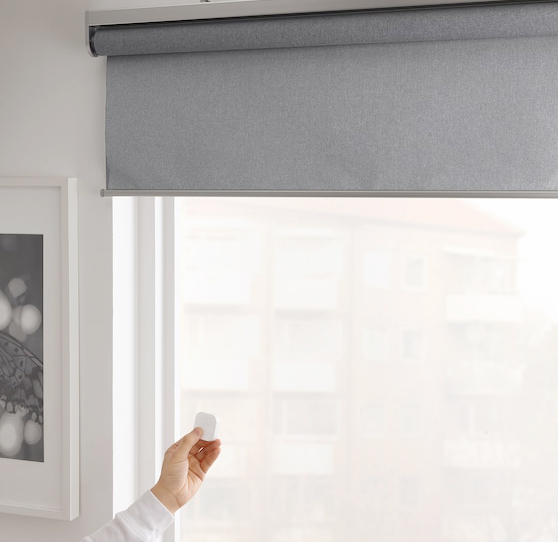
As the name suggests, these are blinds that unfold to shelter your window. Roller blinds consist of one piece of textile which is folded and encircles a casing fitted from corner to corner of the top of your window panel. The blinds could either be inside or outside the window recess.
Roller blinds have a pull cord (connected to the lower part of the blind) or a sidewinding strap device connected to the casing. Roller blinds are simple to use, and most homes and companies use this type of blind.
Roman Blinds
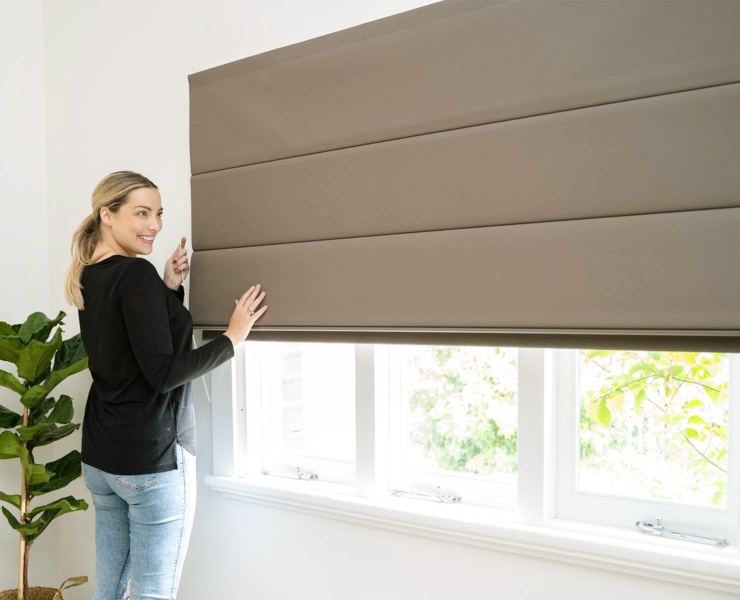
Roman blinds are old-style window coverings made from textile or other materials such as jute and seagrass. Roman blinds share a common feature: the blind is elevated and wraps against itself (the same way as a Venetian blind). This wrapping, when elevated, forms a vast pile of textile at the top of the window.
Venetian Blinds
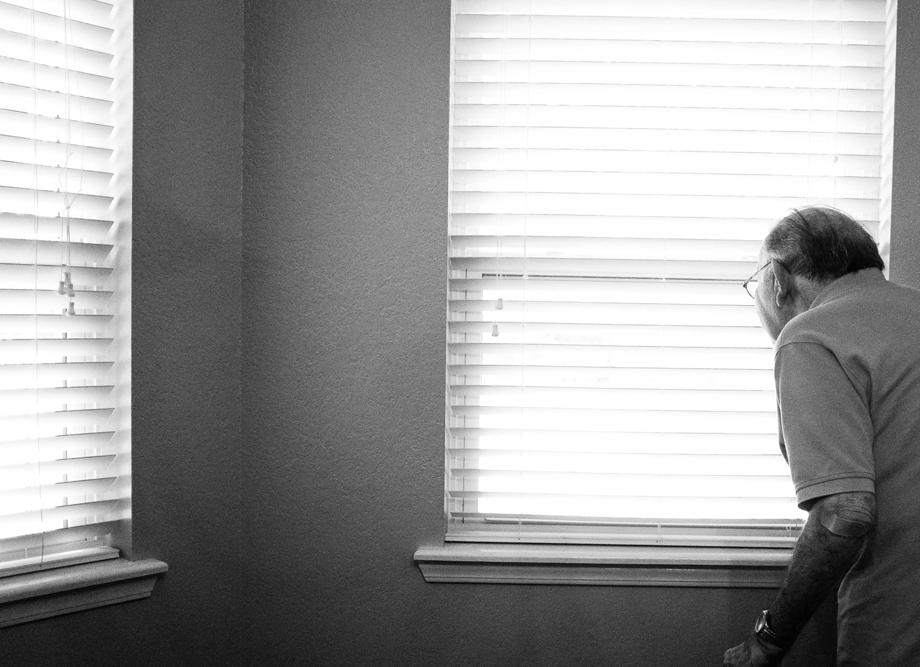
Most modern houses have these types of blinds. Venetian blinds are slats that are horizontal and are made from timber or metal. They are suspended on ladder twines. You can change Venetian blinds easily to restrict light and change the course flowing into the room. Check out how to clean Venetian blinds.
How To Clean Hanging Vertical Blinds
Vertical blinds are a beautiful decoration for your home. They are also something that you have to clean every once in a while.
Take out the vertical blinds from the headrail
Take out the blinds from the headrail by simply unhooking or unclipping. Once you have finished this, you can take this opportunity to clean your headrail also. You can use a silicone-based spray. To ensure that it operates well, spray the grooves.
Clean with warm soapy water
In a large bucket, fill warm water. The ideal temperature of the water should not be more than 30 degrees Celsius or 86 degrees Fahrenheit. If the blind is hanging and the weight is at the bottom, the part is kept together by glue.
If hot water is used, it will spoil and crack the seal. Warm water should be able to clean any stains. You can also use a mild non-bio cleanser if you have delicate materials.
Use a sponge to brush off marks
Using a soft sponge, gently brush off marks working from top to bottom. Do not let curtains sit in water for a long time. This can cause shrinkage, and the fabric can lose its fire-retardant chemical addition.
Place screens on a flat surface to dry
If you hang dry your blinds, they might stretch. If you put them in a dryer, there is a chance they will shrink. To avoid all this, place them on a flat surface to dry. Ensure they are well dried before hanging them again so that they retain their shapes. If you spot any watermarks, you can try removing them using a hairdryer set on low heat, run over it very fast.
Drape them on the headrail when dry
Once the blinds are dry, rehang them on your headrail (that you cleaned first). If you choose to wash your blinds with a washing machine, set the device to gentle and set the temperature no more than 30 degrees Celsius or 86 degrees Fahrenheit.
And do not put in a dryer. Instead, put them in a flat place to dry. When handling the material of the vertical blinds, be careful as they are delicate and can easily fray.
Deep Blind Cleaning
Deep blind cleaning should be done once in a while. The only thing you do in between is maintenance. If the blinds are too dusty, use a dusting spray to remove the dust. Ensure you check the fine prints of the dusting spray to see if it matches with the material that you have. Test it in an area where it is not visible and see if it will leave a spot.
Another method you can use is compressed air. If the blinds are dirty or dusty, you can use a soft brush to remove this. You can also use a fabric or a feather duster to remove the dust before the scheduled deep cleaning.
If you have a hoover that comes with a brush attachment, this can be used to clean your vertical blinds. Work from top to bottom to get all the dust.
How Do You Remove Mould And Mildew From Vertical Blinds?
Mildew marks and fading come about when the blinds are exposed to warmth and moisture for a long time. Below are some natural ways of removing mildew that is cost-effective and protects you from chemical exposure:
White Vinegar
White vinegar is a home remedy for removing mould and mildew, and also bad smells. It can be used in any blind material, be it vinyl or fabric. To remove the mould and mildew, remove the blinds from the handrail and place them on a surface outside.
Spray the blinds with vinegar until they are soaked. Let the vinegar sit for not less than one hour. Wash the blinds using a clean sponge. Carefully wipe the blinds down with a damp cloth that has been rinsed in clean water.
Lemon Juice
Lemon juice is a multipurpose washing product. Mildew is one stain that lemon juice can easily remove. Take the lemon juice and spray it in places where there is mildew on the blinds. Let the lemon juice sit for at least an hour. After one hour, wipe the blinds with a clean damp cloth and let it sundry.
Tea Tree Oil
This is more expensive than white vinegar and lemon juice, but the treatment lasts longer than the two. It is used to remove mildew from blinds. All you need to do is mix two tablespoons of tea tree oil with two cups of water.
Spray on your vertical blinds where the mould or mildew stains are. Let it dry, and then wipe off. The strong tea tree oil odour will go away after a few days. Leave the windows open so that the odour is not overpowering.
The Do’s And Don’ts Of Blind Cleaning
A vertical blind cleaning checklist is a great way to ensure that you have all the necessary tools and materials before starting the job. Before you begin cleaning your vertical blinds, you must prepare for the job by organising a few things. This preparation will help ensure a smooth process and less frustration.The first step in cleaning your vertical blinds is to gather supplies needed for the job.
These supplies may include an old pillowcase, vacuum cleaner, paper towels or cloth, dusting spray or fabric cleaner, and water bucket. Next, you’ll want to get an area clear from any furniture so that you can easily clean all of your vertical blinds at once. Once everything is in place, start pulling down all of your vertical blinds and laying them flat.
Regular Maintenance Of Blinds
Regular maintenance is one of the essential steps in keeping your blinds in good condition. This will make them last longer and not break as easily. Below are a few tips on how to do the regular maintenance of blinds:
- Clean your blinds routinely: Schedule a time once a month to clean your blinds. If this is done routinely, you will find that your blinds will last for years.
- Alternative to microfiber material: Cleaning vertical blinds should not be something that will make you think harder if you are not near a microfiber material. It can be as simple as putting a sock over your hand, dipping it into the water, and there you go! Clean your blinds.
- Blinds and shutters are cleaned similarly: On the other hand, fabric shades are cleaned using a soft brush on the lower shades. Use the low suction set up on your hoover. Starting from the top, run the hoover over the shades. After finishing with one side, do the same thing on the other side.
Maintenance can be as simple as blinds cleaning or as complicated as replacing the cords to make them work again. Regular maintenance allows you to keep your blinds looking and functioning well.
Guidelines For Your Blinds
So the next time you take your blinds down for a better look, remember these three guidelines to make them last for years!
- Keep your vertical blinds clean regularly.
- Don’t touch the vertical blinds with dirty hands.
- Always use a soft, dry cloth to clean your vertical blinds.
If you’re cleaning vertical blinds and you feel like you will not do a thorough job yourself, you can get a professional to come and do a deep cleaning of your vertical blinds. They will check the blinds and use suitable detergents to clean them, which will benefit the lifespan of your blinds. Explicitly speaking, hiring a professional will result in less frequent deep cleaning and saves you time and money in the long haul.

